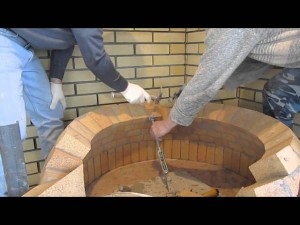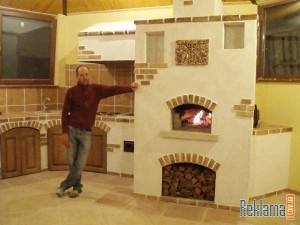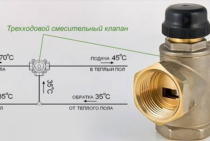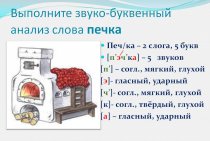Criteria for Adhesive Selection
Choosing glue for fireplaces and stoves should be based on several criteria. Let's deal with this issue and decide what exactly can affect the choice of this material. So:
The location of the fireplace and stoves, which can be indoors or outdoors. Keep in mind that heat-resistant adhesive for stoves and fireplaces can withstand temperatures up to 120 ° C. Therefore, this material can be used for lining furnaces.
But there is one detail. When buying, you should pay attention to the lower temperature limit. Being on the street, for example, a summer kitchen, the liquid must withstand low temperatures. It is also favorable to endure the temperature difference in the off-season.
Before buying, the instructions for use must be fully studied. For facing the firebox, it is necessary to choose a refractory adhesive.
Also, the choice should be made according to the type of finishing material. For different elements, a certain adhesive may be intended.
You should immediately pay attention to the material that was used in the decoration of the fireplace. Not every foundation can fit it.
It is not always possible to use heat-resistant glue for finishing furnaces, since this composition is applied to the tile only in a thin layer. Therefore, you should look at the differences in the plane. With their large presence, a thicker heat-resistant composition should be chosen so that irregularities can be smoothed out.
You should also pay attention to water and steam impermeability. If there is a stove for a bath, then this will be one of the main requirements.
Such glue can be divided into two types. This is determined by its chemical composition:
- Heat-resistant glue synthetic;
- Heat-resistant glue natural.
Glue, as an option for lining fireplaces and stoves
The laying of the fireplace must be carried out with the fulfillment of special requirements, since during operation there will be constant contact with high temperatures. Therefore, conventional concrete solutions in this case will not work. It is necessary to use special ones, the composition of which will be heat-resistant, durable and at the same time elastic, since when heated, all components increase their shape, and when cooled, they must return to their original state, without cracks and destruction.

Indicators of properties of refractory masses
When laying tiles and fireplaces, specialists use a heat-resistant clay mortar. Chamotte is a refractory type of clay, which is the main component of the mixture, in addition to it, there is sand, cement, synthetic plasticizers, and water.
Such a composition is used for brick or masonry, but it is not very convenient for cladding, because when applied to a horizontal surface, it begins to slip, and it hardens for a rather long time. This can lead to asymmetrical lines, thick seams, which will spoil the appearance of the fireplace. Therefore, the use of a special adhesive is recommended for cladding.
Adhesive for laying the base of the fireplace
In their composition, mixtures for fireplaces mainly have clay and cement, they are less plastic, which is why their use for cladding is not recommended. Such a mixture is best used for laying fireclay bricks, since they are similar in composition, which means they will behave the same during heating.

This effect is called linear expansion, under the influence of high temperature, all substances change shape - they expand, after cooling they narrow to their original position. If the composition is the same, then the percentage of expansion / contraction will be the same, the likelihood of cracks will decrease.
How to make a choice
The choice of the required material for construction work is a great art.To prevent excessive monetary, physical and temporary losses, it is required not only to have an excellent understanding of the characteristics of the product, but also to have the necessary experience in its use.
When choosing a heat-resistant adhesive for tiles, you need to study the highest temperature that the material can withstand, as well as pay attention to the place of its application. It is also necessary to know in advance what material will be glued and its composition.
The heat-resistant adhesive composition must be able to dry quickly. as well as sufficient elasticity. It is also worth keeping in mind its adhesive properties.
High-quality heat-resistant tile adhesive is able to resist temperatures up to 120 degrees. During the drying process, toxic fumes will be released, so do not forget about such a parameter as toxicity when choosing a heat-resistant tile adhesive. This type of adhesive is applied at a sufficiently high temperature, so the best choice is a heat-resistant tile adhesive with the lowest level of toxicity.
The next step in choosing an adhesive is waterproof. A heat-resistant tile adhesive that has this characteristic will have a better adhesive ability. It is possible to heat the dried refractory adhesive only 2 days after the final drying.
Heat-resistant adhesive for tiling stoves and fireplaces
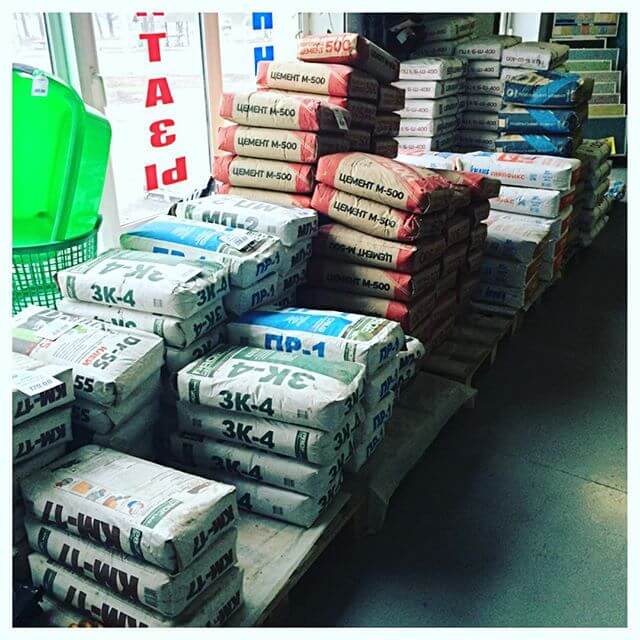
Refractory adhesive for tiles refers to silicates, which are made on the basis of liquid glass with the addition of heat-resistant clay, kaolin, and some binders. This material is already ready for use, it sets perfectly, it is easy to apply on a previously prepared surface.
Ready mixes for laying stoves
The option of self-preparation of materials for the masonry mixture is the most economical, but at the same time very laborious, especially when it comes to the clay mixture. Ready-made mixtures will help speed up the work and avoid mistakes when preparing the masonry mortar. There are many, but let's look at just a few:
- Emelya is an elastic, heat-resistant ready-made material. Differs in high resistance to formation of cracks, almost does not smell. The mixture is well cleaned from hands and tools. Used for ceramic and fireclay bricks. During the laying of the furnace, the brick can not even be wetted, as the mixture perfectly retains moisture.
- Terracotta is an environmentally friendly, heat-resistant, elastic mixture. It contains high-quality kaolin clay, kaolin sand and fireclay. Withstands temperatures up to 1300 degrees. The only negative is that it takes a long time to dry.
- Refractory - used for laying the internal structures of furnaces and chimneys from refractory bricks. It can be used for facing the outer surfaces of stoves and fireplaces with porcelain stoneware and ceramic tiles.
- Ekabud - masonry and grout for furnaces of their refractory and ceramic bricks.
- Vetonit is a clay mortar intended for laying stoves and chimneys from ceramic bricks indoors. The composition of the mixture includes clay, cement, sand and additives that improve the properties of the mixture.
The use of ready-made mixtures requires compliance with certain rules:
- While the homemade solution is mixed mainly by hand, the finished formulations must be mixed with water exclusively with a mixer.
- Re-kneading the mixture after it has solidified is prohibited.
- The volume of one batch should be such that it can be used within an hour.
- The laying of the furnace should be carried out at a temperature of at least 10 degrees.
- The presence of plasticizers in the mixture, which do not allow the solution to dry too quickly, helps to ensure that the seams do not crack. Therefore, the furnace should not be warmed up earlier than three days after completion of work.
- To install a chimney, you need to purchase a special mixture, which has the appropriate designation on the package.
- If you decide to revet the oven. then this should be done no earlier than 20 to 30 days after the start of intensive use.
- After the first furnace, efflorescence may appear on the seams of the masonry, which are removed after the furnace has cooled down with a damp cloth.
The quality of ready-made mixtures is much better than home-made ones, but their cost is quite high. For this reason, everyone chooses the option that best fits the budget allocated for the furnace device.
Varieties of heat-resistant glue
Fireplace Adhesive is a viscous texture solution that provides fast and comfortable bonding of decorative elements as well as tiles. There are two types of this mixture:
- dry (it must be diluted);
- liquid (jelly-like).
The first option is suitable for those who do not have skills in facing. The dry mix hardens much longer, so it will not deteriorate if the tiling process is delayed. Liquid glue is not inferior in quality or any parameters, but it is less convenient for beginners. It is also worth noting that the finished mixture will cost about 2-3 times more.
cement mixture
A simple cement mortar is mixed from sand, cement and water. The proportion depends on the brand of cement. Before adding water, cement and sand are thoroughly mixed together.
When additional ingredients are added, a complex mixture is obtained. Often, cement mortar is supplemented with the addition of lime paste. But then you need to use it quickly enough. As part of the mortar, 1-3 parts of other binders and 6-15 parts of sand are laid on one part of cement.
A heat-resistant cement mortar is obtained by adding Portland cement and small broken bricks to a simple cement-sand cement.
clay mix
For laying the furnace body, it is necessary to prepare a homogeneous clay solution of a creamy consistency and without lumps. Only a well-prepared mortar guarantees thin masonry joints and does not crumble during operation of the stove.
Before preparing the solution, the clay is checked for fat content. One of the simplest ways is the following: 2 - 3 kg of clay is poured with water, the lumps are thoroughly kneaded and mixed well with a wooden spatula. After that, look at the shoulder blade:
- if the clay strongly sticks to it, then the clay is greasy and requires the addition of sand;
- if only individual clots remain on the wood, then the clay can be considered normal and the solution is prepared without adding sand;
- if only a thin clay film remains on the spatula, then the clay is lean and greasy clay must be added to the solution.
The consumption of clay mortar is an average of 25 liters per 100 bricks. The optimal masonry mortar is considered to be one whose composition is as identical as possible to the composition of the brick used for laying the furnace. A good clay solution easily withstands heating up to 800 - 1000 degrees. At the same time, it does not lose strength and does not crack.
If it is necessary to increase the strength of the solution, table salt or Portland cement is sometimes added to it:
- add 100 - 150 g of fine table salt to a bucket of solution and mix the mass thoroughly;
- Portland cement is added in an amount of 0.5 - 1 kg for the same volume of clay solution.
The ratio of clay and sand in the clay mixture can vary from 1:1 to 1:2. The volume of added water is usually a quarter of the volume of clay.
Materials for preparing the solution can be prepared independently, or you can purchase ready-made components at a hardware store. In this case, you can offer the following types of clay:
- white clay - used to prepare many refractory mixtures, but its use is allowed only for wood-burning stoves with a temperature of no more than 1000 degrees;
- fireclay clay is the best solution for kiln masonry in any firing mode.
